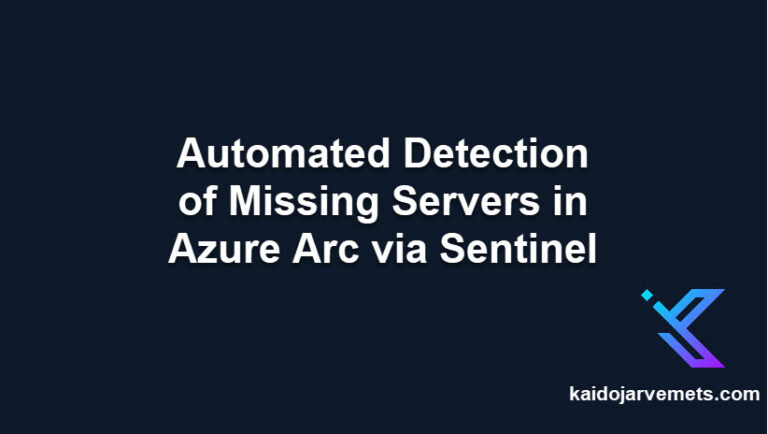Introduction
Azure Arc for Servers is a powerful solution offered by Microsoft that extends the capabilities of Azure to on-premises and edge servers. With Azure Arc for Servers, organizations can easily manage and govern these distributed servers using the same Azure tools, policies, and practices they are already familiar with. This article will provide a comprehensive overview of Azure Arc for Servers, including its definition, functionality, key features, benefits, and a comparison with traditional server management.
Understanding Azure Arc for Servers
Azure Arc for Servers is a hybrid cloud solution that allows organizations to bring their on-premises and edge servers into the Azure ecosystem. By doing so, they can take advantage of the cloud-native capabilities and benefits that Azure offers, such as centralized management, security, monitoring, and automation.
When it comes to managing servers, organizations often face challenges due to the diverse environments in which their servers are located. Azure Arc for Servers addresses this challenge by providing a unified view of all servers. Discover how our Hybrid Cloud Modernization Program complements this by aligning your infrastructure with Azure’s capabilities. This means that whether a server is running in the cloud or on-premises, organizations can manage and monitor it using a single pane of glass.
Definition and Functionality
Azure Arc for Servers is essentially a management solution that provides a unified view of all servers, regardless of their location. It enables organizations to connect their servers to Azure and leverage Azure Resource Manager to deploy and manage resources across these servers. This hybrid approach allows organizations to build and manage applications consistently, regardless of whether they are running in the cloud or on-premises.
With Azure Arc for Servers, organizations can extend the capabilities of Azure to their on-premises and edge servers. This means that they can take advantage of Azure services like Azure Policy, Azure Monitor, and Defender for Cloud to enforce policies, monitor server health and performance, and enhance security.
Key Features of Azure Arc for Servers
Azure Arc for Servers offers several key features that empower organizations to effectively manage their servers:
- Centralized Management: Azure Arc for Servers provides a single pane of glass for managing servers, offering consistent experience across diverse environments. This means that organizations can use familiar Azure tools and interfaces to manage their servers, regardless of whether they are running in the cloud or on-premises.
- Policy Enforcement: Organizations can enforce Azure policies on their servers, ensuring compliance and governance. This allows them to maintain consistency across their server infrastructure and meet regulatory requirements.
- Inventory and Update Management: Azure Arc for Servers enables organizations to have an up-to-date inventory of their servers and automate updates to improve security and stability. By having a comprehensive view of their server infrastructure, organizations can easily identify outdated or vulnerable servers and take necessary actions.
- Monitoring and Alerting: With Azure Arc for Servers, organizations can monitor the health and performance of their servers, set up alerts, and gain insights using Azure Monitor. This allows them to proactively identify and address any issues that may impact the availability or performance of their servers.
- Advanced Security: Azure Arc for Servers integrates with Defender for Cloud and Defender for Servers, providing enhanced security and threat detection capabilities for on-premises and edge servers. Organizations can leverage Defender for Cloud advanced analytics and machine learning capabilities to detect and respond to security threats in real-time.
By leveraging Azure Arc for Servers, organizations can bridge the gap between their on-premises and cloud environments, enabling them to build and manage applications consistently. This hybrid cloud approach offers flexibility, scalability, and cost-efficiency, allowing organizations to optimize their server infrastructure and focus on delivering value to their customers.
Benefits of Azure Arc for Servers
Azure Arc for Servers offers several benefits to organizations looking to extend their infrastructure to the cloud:
Enhanced Server Management
By using Azure Arc for Servers, organizations can manage all their servers, whether in the cloud or on-premises, from a central location. This centralized management approach enables better control, efficiency, and scalability. Learn more about enhancing these benefits through our Hybrid Cloud Modernization Program.
With Azure Arc for Servers, organizations gain a comprehensive view of their entire server infrastructure. They can easily monitor the health and performance of their servers, identify any issues or bottlenecks, and take proactive measures to optimize their server environment. This level of visibility and control allows organizations to make informed decisions and quickly respond to any changes or challenges that may arise.
In addition, Azure Arc for Servers provides organizations with advanced automation capabilities. IT teams can leverage automation tools and scripts to streamline routine tasks, such as server provisioning, configuration management, and software updates. This automation not only saves time and effort but also reduces the risk of human error, ensuring consistent and reliable server management across the organization.
Improved Security and Compliance
Azure Arc for Servers provides organizations with a unified security and compliance framework. By enforcing Azure policies, organizations can ensure that all servers, regardless of their location, adhere to the same security standards, helping reduce potential vulnerabilities and ensuring compliance with industry regulations.
With Azure Arc for Servers, organizations can implement robust security measures to protect their server infrastructure. They can leverage Azure’s built-in security features, such as Defender for Cloud, to detect and respond to threats in real-time. By continuously monitoring server activities and analyzing security logs, organizations can identify any suspicious behavior or potential security breaches, allowing them to take immediate action and mitigate risks.
Furthermore, Azure Arc for Servers enables organizations to implement a centralized identity and access management system. They can leverage Entra ID to manage user identities, enforce strong authentication methods, and control access to servers based on user roles and permissions. This centralized approach simplifies user management, reduces the risk of unauthorized access, and ensures compliance with data protection regulations.
Additionally, Azure Arc for Servers offers organizations the ability to perform regular security assessments and audits. They can leverage Azure’s compliance management tools to assess the security posture of their servers, identify any compliance gaps, and take corrective actions. This proactive approach to security and compliance helps organizations stay ahead of potential threats and maintain a strong security posture.
Azure Arc for Servers vs. Traditional Server Management
Comparative Analysis
When comparing Azure Arc for Servers with traditional server management, several key differences emerge:
- Azure Arc for Servers offers a unified management experience across on-premises and cloud resources, while traditional server management typically involves separate tools for each environment.
- Azure Arc for Servers enables organizations to leverage Azure services such as Azure Policy and Defender for Cloud, which are not available in traditional server management setups.
Summary
When deciding between Azure Arc for Servers and traditional server management, organizations need to evaluate their specific requirements and goals. If you are looking for a unified management experience and enhanced security, Azure Arc for Servers is ideal. Explore our Hybrid Cloud Modernization Program for a comprehensive solution.




